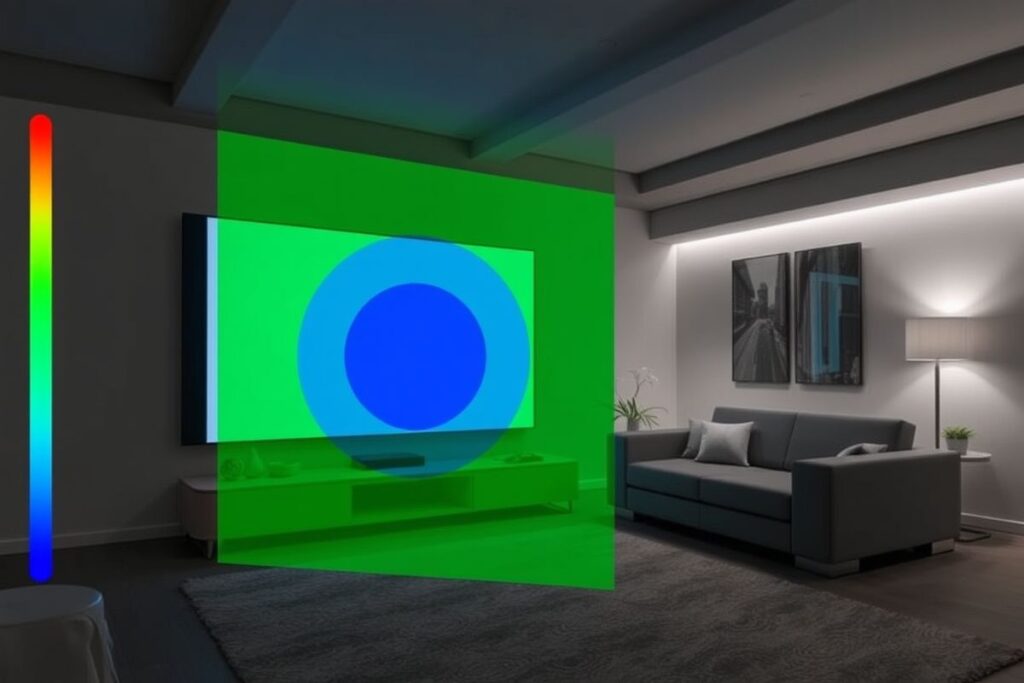Local Dimming Zones: A Balancing Act Between Picture Quality and Power Consumption
In the ever-evolving world of television technology, the pursuit of perfect picture quality is a constant endeavor. One of the most significant advancements in recent years is local dimming, a technique that selectively controls the backlight of an LCD TV to enhance contrast and black levels. The magic lies within the local dimming zones, individual sections of the backlight that can be brightened or dimmed independently. This allows for a more precise control of light, resulting in deeper blacks and brighter whites, ultimately leading to a more realistic and immersive viewing experience. However, this improvement comes with a trade-off: power consumption. Balancing the number of local dimming zones with energy efficiency is a crucial aspect of modern TV design.
Understanding Local Dimming

The Basics of Backlight Control
Traditional LCD TVs rely on a uniform backlight that illuminates the entire screen. This can lead to issues like backlight bleed, where light leaks from brighter areas into darker ones, washing out black levels. Local dimming addresses this problem by dividing the backlight into zones that can be individually controlled. More zones generally translate to better contrast and less blooming, but also increased complexity and cost.
The intricacies of backlight control involve complex algorithms that analyze the on-screen content in real time. These algorithms determine which zones need to be brighter and which need to be dimmer, dynamically adjusting the backlight to optimize the image quality. This dynamic adjustment is the key to achieving deep blacks alongside vibrant highlights.
The number and arrangement of these zones significantly impact the effectiveness of local dimming. A higher number of zones allows for finer control and precision, minimizing unwanted light leakage and maximizing contrast ratios.
Types of Local Dimming
There are primarily two types of local dimming: edge-lit and full-array local dimming (FALD). Edge-lit dimming places the LEDs around the perimeter of the screen, while FALD distributes them across the entire back panel. FALD generally offers superior performance due to its more granular control, but it is also more expensive to implement.
Within FALD, there are further variations, such as mini-LED and micro-LED. These technologies utilize even smaller LEDs, allowing for an even greater number of dimming zones and more precise control over the backlight. This results in improved contrast, reduced blooming, and better overall picture quality.
The choice between edge-lit and FALD depends on various factors, including budget, desired picture quality, and power consumption considerations. While edge-lit dimming is more affordable, FALD provides a significant boost in image quality for those seeking the best possible viewing experience.
Impact on Picture Quality
Local dimming zones play a pivotal role in enhancing contrast ratios, leading to deeper blacks and brighter whites. This enhanced contrast makes images appear more realistic and three-dimensional, particularly noticeable in dark scenes or scenes with high dynamic range (HDR) content. The ability to control individual zones prevents the washout effect often seen in traditional LCDs.
Minimizing backlight bleed is another key benefit of local dimming zones. By selectively dimming the backlight in darker areas, light leakage is significantly reduced, resulting in cleaner blacks and improved overall picture clarity. This is especially important in movies and TV shows with dark scenes or letterboxed content.
The overall effect of local dimming is a more immersive and engaging viewing experience. The improved contrast and reduced blooming create a more realistic and vibrant image that draws the viewer into the content. This is a significant upgrade over traditional LCD technology.
The Power Consumption Equation
Balancing Performance and Efficiency
While local dimming zones enhance picture quality, they also impact power consumption. More zones typically require more power to operate, leading to higher energy bills. Finding the optimal balance between performance and efficiency is a key challenge for manufacturers.
The efficiency of the LEDs themselves also plays a role. Modern LEDs are becoming increasingly efficient, allowing for better picture quality with less power consumption. Manufacturers are constantly striving to improve LED technology to minimize the power consumption of local dimming systems.
Smart dimming algorithms also contribute to power savings. These algorithms analyze the content being displayed and adjust the backlight accordingly, minimizing power usage without sacrificing picture quality.
Energy Saving Features
Many TVs with local dimming zones offer energy-saving features that allow users to further reduce power consumption. These features often include adjustable backlight brightness settings and automatic dimming based on ambient light conditions.
Some TVs also offer dynamic dimming modes that automatically adjust the number of active zones based on the content being displayed. This can lead to significant power savings without noticeably impacting picture quality.
Utilizing these energy-saving features can help users minimize their energy bills without compromising the benefits of local dimming technology.
Future Trends in Power Management
Ongoing research and development in display technology are focused on improving the energy efficiency of local dimming systems. New materials and manufacturing processes are being explored to create more efficient LEDs and backlight systems.
Artificial intelligence (AI) is also playing an increasing role in optimizing power consumption. AI-powered algorithms can analyze content and adjust the backlight with even greater precision, minimizing power usage without sacrificing picture quality.
These advancements promise to further enhance the energy efficiency of local dimming technology, leading to even better picture quality with lower power consumption in the future.
Conclusion
Local dimming technology has revolutionized the way we experience television, offering significant improvements in picture quality through enhanced contrast and reduced blooming. While the number of local dimming zones directly impacts performance, it also influences power consumption. Finding the right balance between these two factors is crucial. As technology advances, we can expect even more sophisticated local dimming systems that deliver stunning picture quality while minimizing their energy footprint. Consumers should consider their viewing habits and budget when choosing a TV with local dimming, weighing the benefits of improved picture quality against the potential increase in power consumption.

Leave a Reply